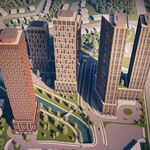Aside from the unfeasibility of getting rid of the overwhelming majority of BiLevels any time soon (don't expect the CEM coaches to retire for at least 50 years), there is also the other issue of... what standard?
If you look around at various European networks, there is none. There is a ton of variation, even amongst different stations in the same country - level boarding on a regional level is very much "oh yes we have that... well, except when we don't", and not just in the back country. As such, even though most European rail operators buy equipment that is less customised and bespoke than we are used to here, most of them will have unique floor and door heights to match local conditions.
Our BiLevels, at 610 mm, are not that unusual - most German networks have trains with platform heights between 600-700 mm. And Skoda's CityElefant EMU is 550 mm, which is very close to our own.




